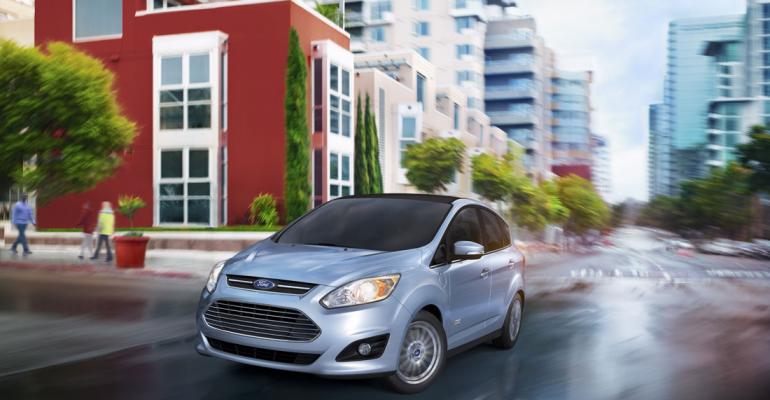U.S. auto makers made record mileage and carbon-dioxide-emissions improvements in model-year ’12 and appear on track to meeting first-year targets in the industry’s march toward new federally mandated levels of fuel efficiency.
Preliminary U.S. Environmental Protection Agency data shows the industry’s fleet-wide CO2 emissions at 296 grams per mile, or the equivalent of 30.0 mpg (7.8 L/100 km). Auto makers were expected to achieve 295 gpm, or 29.3 mpg (8.0 L/100 km), in the first year of the targets that ratchet up to maximum CO2 emissions of 250 gpm, 35.5 mpg (6.6 L/100 km), by 2016.
Factoring in credits for advanced air-conditioning systems should push the industry safely over its requirements.
But some manufacturers remain under pressure to achieve individual targets enforced separately by the U.S. National Highway Traffic Safety Admin.
“They are tough standards,” says Greg Schroeder, a senior research engineer at the Center for Automotive Research in Ann Arbor, MI. “Things could get interesting in 2016.”
Auto makers including Daimler, BMW, Chrysler, Fiat, Jaguar Land Rover, Porsche and Volvo missed their corporate average fuel economy bogeys for ’12 and will face fines by NHTSA, which in ’11 reached $25.6 million.
The NHTSA results underscore the work manufacturers of smaller, high-output vehicles have ahead of them under rules employing for the first time a “footprint” approach to determine an auto maker’s individual share of the fleet standard.
Sellers of smaller cars must achieve higher levels of fuel economy than auto makers marketing larger models, such as fullsize trucks and SUVs.
“Quite the challenge, because we are not always fairly treated, especially if you take the footprint as a reference,” Porsche North America President and CEO Detlev von Platen tells WardsAuto.
However, auto makers selling fewer than 400,000 vehicles annually in the U.S. face a slower ramp-up to 2016, and they also have the opportunity to purchase credits from other companies to reach their minimums.
They may not need the loopholes.
Each of the auto makers to miss ’12 NHTSA minimums soon will bring to market electrified vehicles sure to boost their fuel-economy averages.
Ford, for example, saw its quarterly performance in theWardsAuto Fuel Economy Index jump once its hybrid-electric vehicles began recording meaningful sales volumes. Ford’s index rose to 23.8 mpg (9.9 L/100 km) in first-quarter 2013 from 22 mpg (10.7 L/100 km) in third-quarter 2012.
Over the same period, Ford went from trailing the industry average of hybrid and EV penetration by more than two share points to exceeding the present average of 3.6%.
On the whole, the data would suggest auto makers are on track to meeting efficiency standards once thought out of reach.
“Jaguar Land Rover is making a variety of product changes to improve fuel economy at a rate that exceeds the industry average during the ’12-’16 model-year period,” the auto maker tells WardsAuto in a statement.
“Further improvements will be supported by (research and development) investment by (Indian parent) Tata ($4.6 billion) and driven by increased use of advanced powertrain and hybrid technologies and lightweight materials in existing and new models.”
Between the ’07 and ’12 model years, according to the EPA, CO2 emissions rates declined 13% and fuel economy increased 16%. The emissions and fuel-economy improvements auto makers made between ’11 and ’12 represent all-time lows and record year-over-year improvements.
All major auto makers improved fuel economy between ’11 and ’12, resulting in lower emissions. Honda is projected to have the lowest emissions levels and highest fuel economy for ’12, dethroning ’11 leader Volkswagen, now in second place.
Mazda, Toyota and Subaru would round out the top five performers in ’12.
General Motors, Chrysler-Fiat and Daimler were the poorest performers.
Final figures for ’12 will come from the EPA next year. Hyundai and Kia are not factored into the results at this time due to a continuing government investigation into overstatement of the fuel economy of some of their models.
New technologies are driving the efficiency gains. Fuel-saving gasoline direct-injection systems, for example, have grown from essentially zero in ’07 to 24% of the market in ’12, according to the EPA.
The use of turbochargers, which allow auto makers to downsize engines without sacrificing performance, tripled to a projected 9% in ’12 from 3% market penetration in ’07, while the use of transmissions with more than six speeds and continuously variable transmissions also tripled in the same time period to 75% from 25%.
Consumers have more fuel-efficient vehicles to choose from, as well.
According to the EPA, the number of SUVs, pickups, minivans and vans with combined-cycle fuel-economy values of more than 20 mpg (11.8 L/100 km) increased 70% to 65 models in ’12 from 38 models in ’07. The number of conventional HEVs and diesel-equipped vehicles has doubled and growing numbers of plug-in HEVs and battery EVs are available.
In fact, the EPA says 25% of ’12 vehicles likely would meet 2016 emissions standards, and most of them use traditional internal-combustion technologies across a wide range of vehicle segments. About 20 models could meet the even tougher 2025 regulations.





